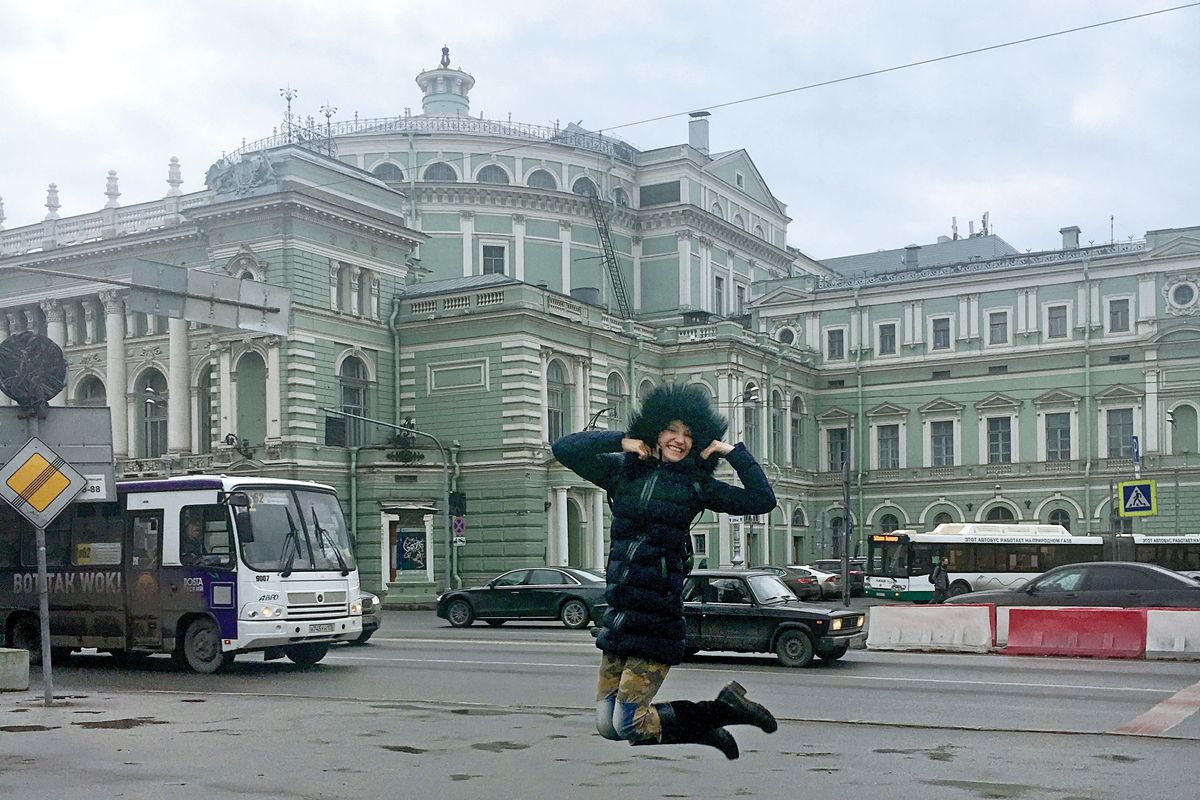Inside Christine Shevchenko's Travels to St. Petersburg for One-on-One Giselle Coaching
In November, American Ballet Theatre principal Christine Shevchenko traveled to St. Petersburg to work with one of the coaches at the Mariinsky Ballet, Margarita Kullik. It was her fourth time working with Kullik, who in the 1980s and ’90s was a leading dancer at the Mariinsky, then known as the Kirov Ballet. Below, Shevchenko talks about the experience of working together for two intense weeks.
As told to Marina Harss
My dream has always been to work with someone at the Mariinsky Ballet. The first time was back in 2015 when I was awarded the Leonore Annenberg Arts Fellowship. A lot of dancers use that grant to travel and get coaching at other companies.

Late-night Giselle rehearsal
Courtesy Christine Shevchenko
Irina Kolpakova
, my coach at American Ballet Theatre, was actually the one who recommended that I work with Margarita Kullik. They’re old friends. My boss, Kevin McKenzie, made the connection. That year Kullik and I worked on Don Quixote. And because it was so beneficial I kept going back; every year in November when we have some time off at ABT, I try to go to St. Petersburg for two weeks.
We have a great connection. She’s very energetic and sort of bubbly, and we work really hard in the studio. She’s in her 50s, so she can still show things really well. And she’s very hands-on. I see the results immediately. Sometimes, when I’m back home, I’ll send her a video of one of my rehearsals, and she’ll give me suggestions. We stay in touch.
I take class with the company every morning while I’m there. Their class is pretty different. For starters, it’s only an hour long, but wow, they get a lot into that class; they just sort of go-go-go without a pause and get through every single step before the hour is up. I find it really helpful to see what other dancers are doing, how they approach things, and to get out of my comfort zone. I think it makes me dance better.

Courtesy Christine Shevchenko
This time was a little more challenging because the company was very busy and my rehearsals had to be scheduled for around 8 o’clock at night. After class, I would go out and see things in St. Petersburg, but it got dark really early, so then I’d head back to the hotel and take a nap. Then, in the evenings, Kullik and I would work until about 10:30. There would be other things going on at the theater, ballets being performed, or operas. The theater always felt really alive.
We worked on Giselle because I’m going to have my debut at the Metropolitan Opera House during ABT’s spring season. We examined every little detail. All those little details can really change the way you look in the role. Like the placement. She would work on how I placed my head and neck, to make it look perfect on me. Sometimes we would do it together, and she would tell me what she was feeling. It was very, very detailed. We would literally stand there looking in the mirror, seeing which angle worked best for me. Maybe something else would work for another person, but she made sure all the lines fit me well. Or, in the mad scene, when I get down onto the floor, we would spend time figuring out what position makes the audience understand the situation better.

Courtesy Christine Shevchenko
In terms of character development, she focused more on what would look more believable and not forced. We would try different positions, gestures and glances to see what worked best on me to bring out the right quality and personality of Giselle.
It felt amazing just to be there. There’s so much history in that theater. The studios are raked, which takes some getting used to. Everything is so old. It even smells old, and the lights in the studios have this yellowish tinge. Being there feels like you’re tapping into this older ballet generation. Kullik studied with Natalya Dudinskaya, and she would tell me stories about her.
I loved having this uninterrupted time to work together, which is so different from when I’m at ABT, with so much going on. We could go over things as many times as we wanted, and there was no rush to get through anything. Afterwards, I feel like I dance better, more cleanly. I see the results, even after just two weeks. And that gives me confidence.





